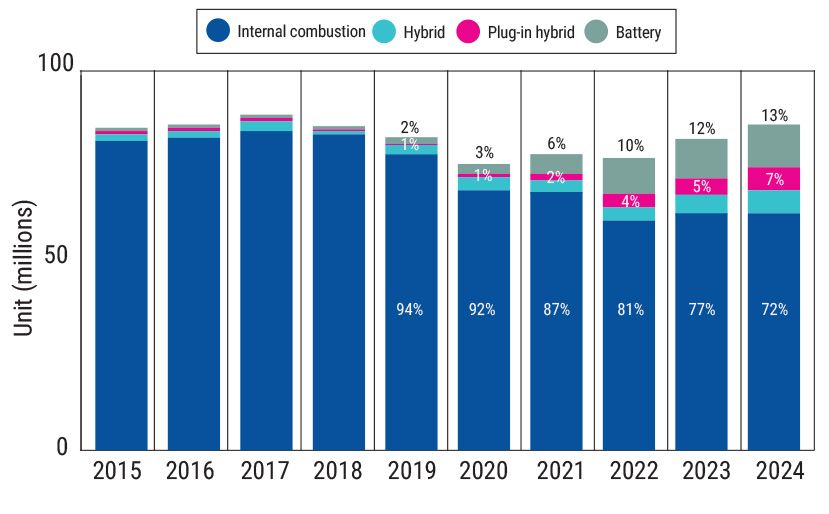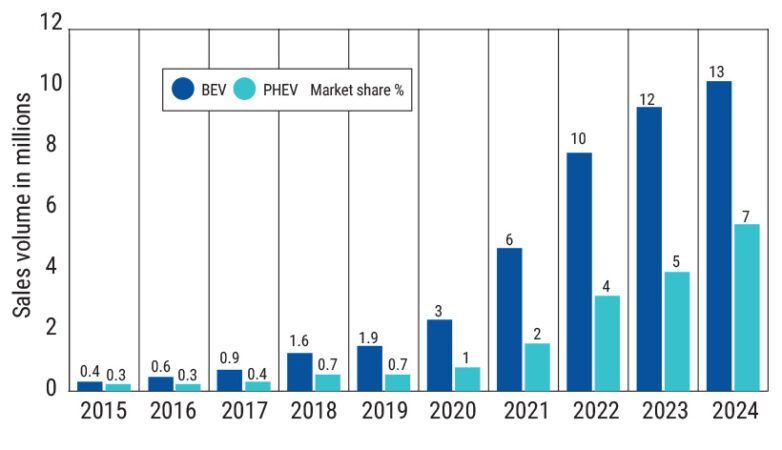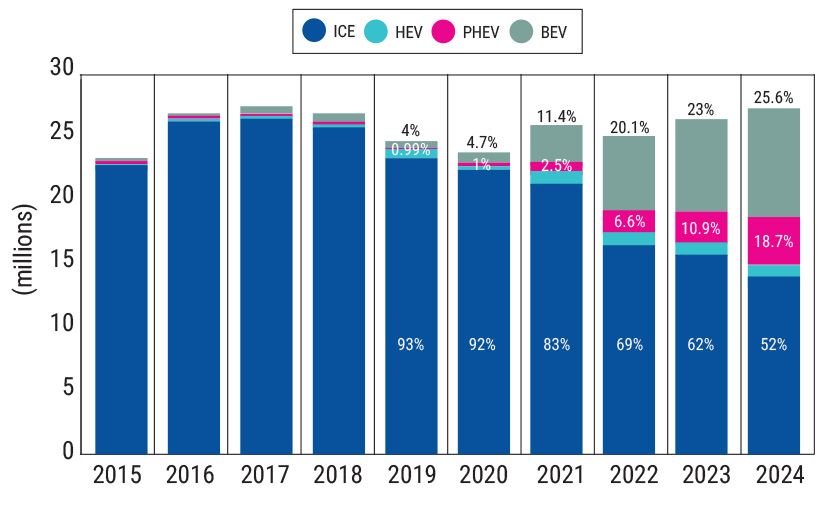Over the last 18 months, you might have noticed the rhetoric surrounding electric vehicles (EVs) as a dying technology with some describing them as “the end of the road,” or at a “dead end” as they “run out of power” – a “massive disappointment” even.
As usual with disruptive innovation, the facts contradict the headlines. According to the EV data reported for 2024, the technology on the road to demise is the internal combustion engine (ICE). Indeed, the market share of ICE vehicles has been dropping five percentage points on average per year since 2019, as shown below.
Global vehicle sales and share by segment

As battery electric vehicles (BEVs) and plug-in hybrid vehicles (PHEVs) continue to gain traction and replace aging gas-powered cars, the imminent decline and eventual phase-out of ICE vehicles will become increasingly clear.
EV naysayers often argue that PHEVs have gained share at the expense of battery electric vehicles. While it is true that PHEVs gained more relative share than BEVs in 2024, BEVs have grown at a faster overall pace over the past decade.
According to our research, traditional automakers are featuring PHEVs as an interim technology to close the gap between their ICE vehicles and the compelling BEVs that they have not been able to produce at affordable price points. That said, both PHEVs and BEVs are devouring the share of ICE vehicles, as shown below.
Annual global sales and market penetration

Traditional automakers are enjoying what we believe will be short-term gains from PHEVs but are likely to face long-term peril as innovative rivals harness the declining cost curve associated with consumer electronic batteries to produce much less expensive BEVs. Commoditized robotaxi fleets could accelerate the demise of ICE vehicles.
Interestingly, Chinese companies have reduced EV costs aggressively, offering a glimpse into the likely transition from ICE to BEV vehicles in the developed world. Last year, the market share of BEVs and PHEVs in China was 25% and 19%, respectively, pushing the share of ICE vehicles down more than 10 percentage points from 62% in 2023 to 52%, as shown below, well below the 72% market share of ICE globally. Excluding China, the market share of ICEs is still 80%, suggesting significant disruptive innovation to ICE vehicles in the years ahead.
China market share by vehicle segment

Tesla has announced plans to introduce a lower-cost EV model this quarter, which could turbocharge EV demand beyond China. In our view, BEVs are on course to deliver the most performant, lowest-priced transportation solutions in the world.
While recent tariff developments have introduced fresh uncertainty into global trade, our long-term optimism on the investment case for BEVs remains unchanged.








